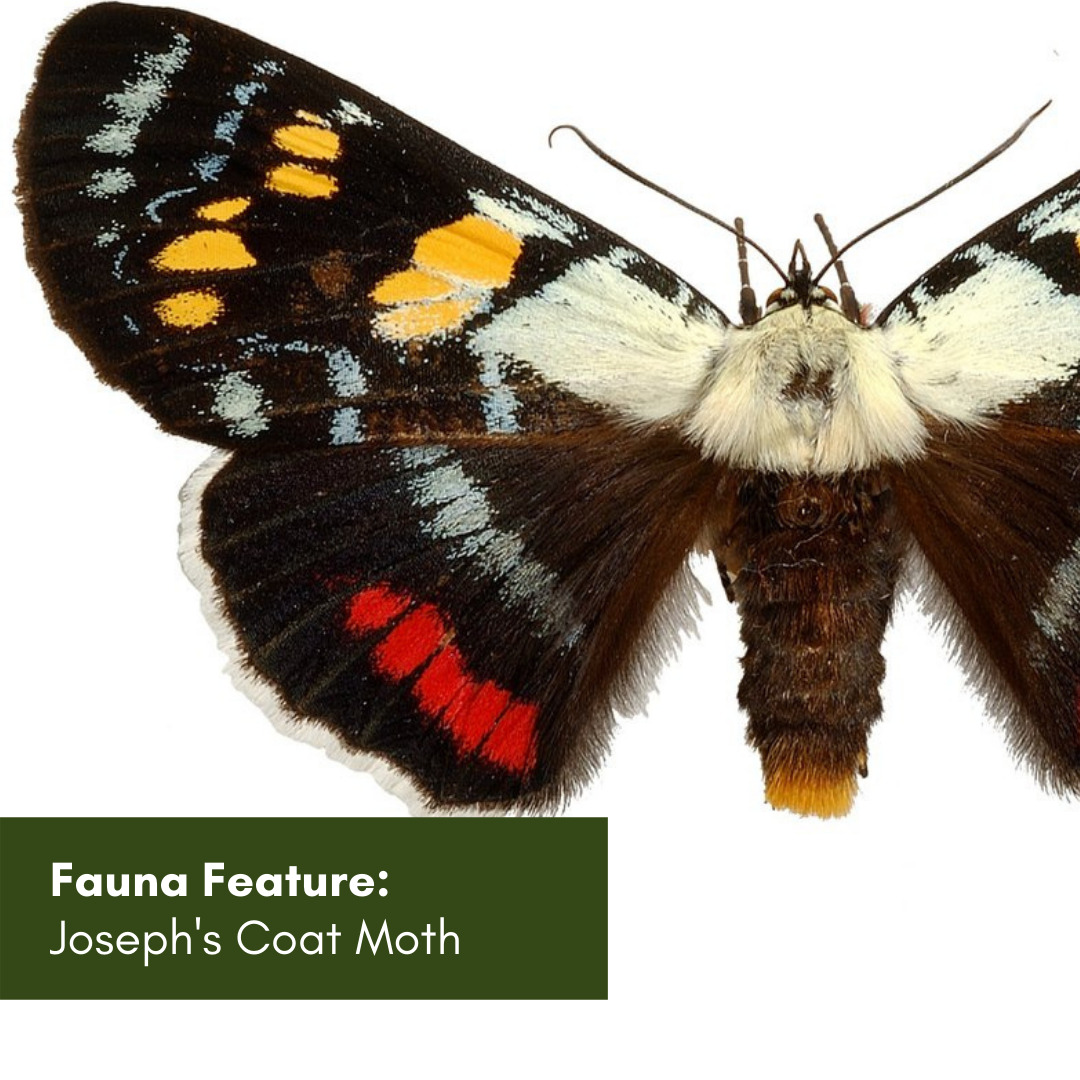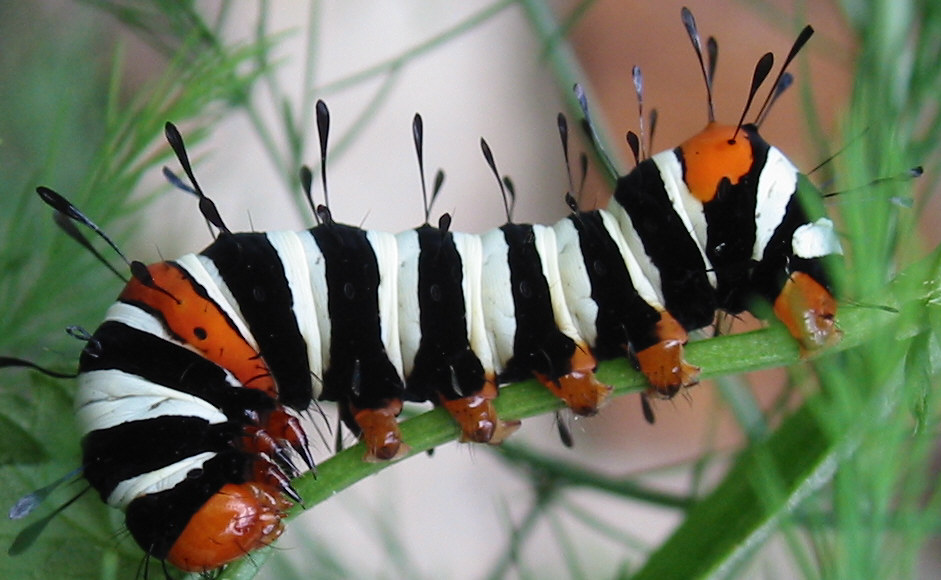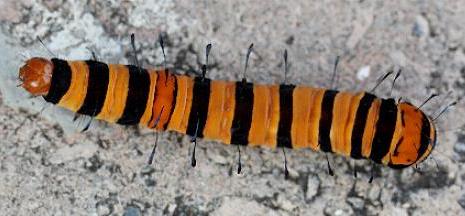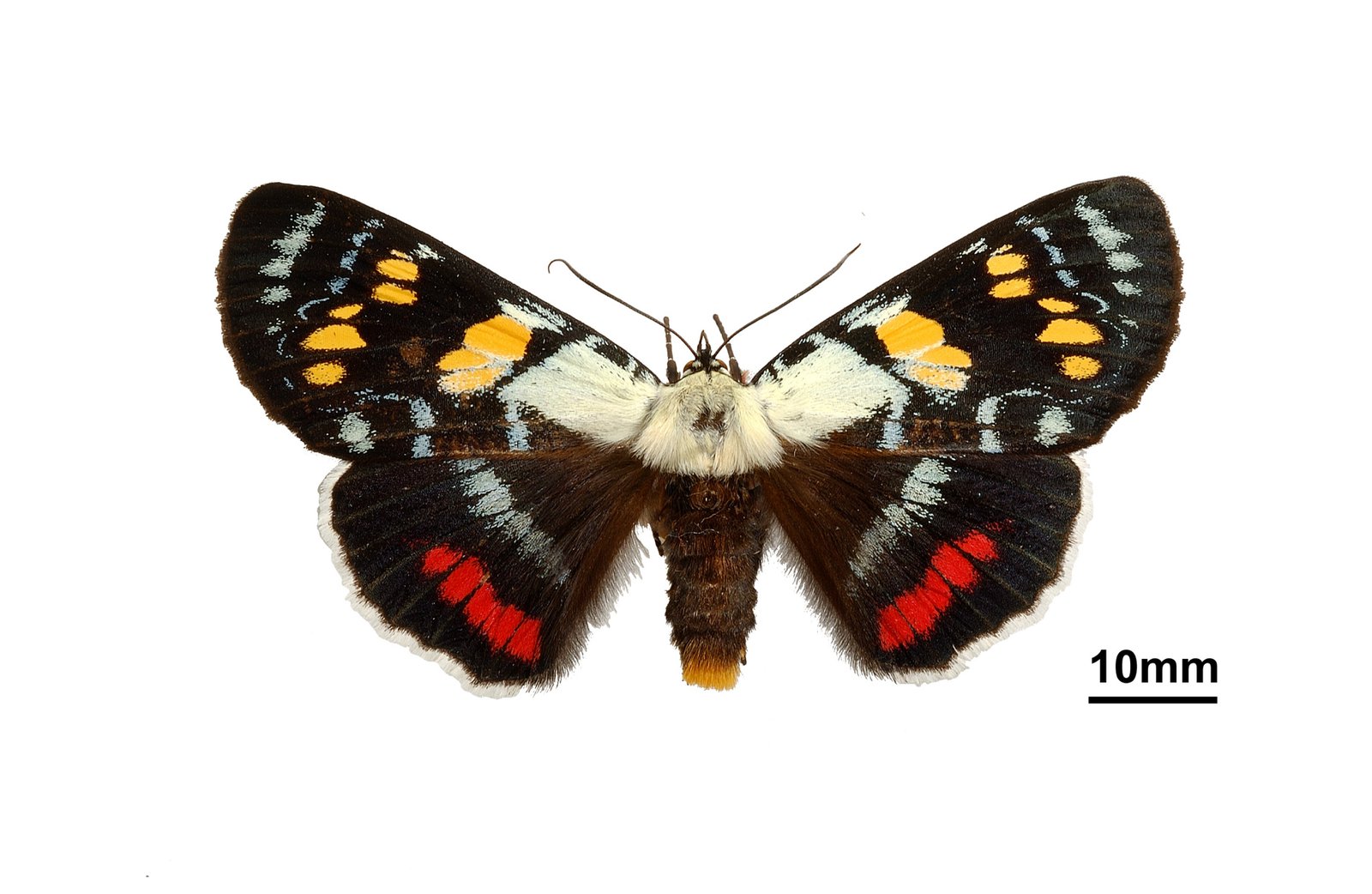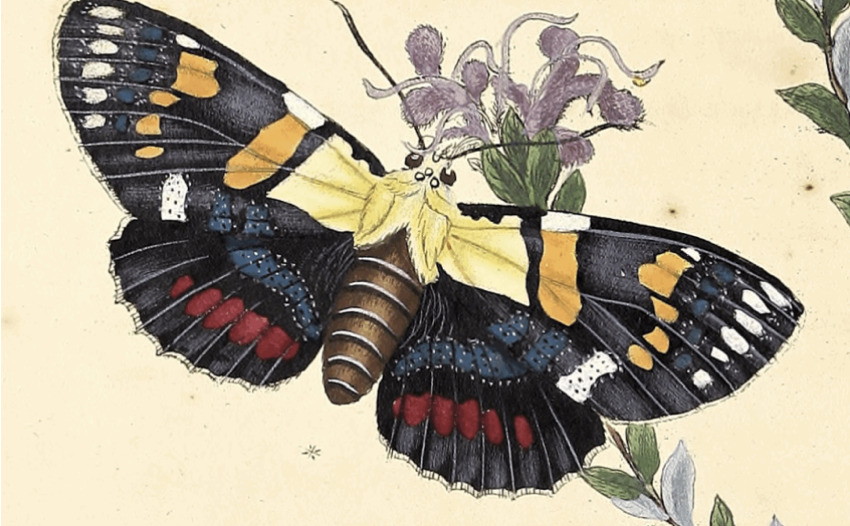Among the diverse moth species fluttering throughout the Hunter is the magnificently colourful Joseph’s Coat Moth (Agarista agricola), or painted vine moth. The name recalls a biblical story in which Joseph received a “coat of many colours” as a gift from his father. Commonly found in the Hunter, this species forages on vines from the Vitacea family including Australian native grapes (Cissus opaca), slender grapes (Cayratia clematidea) and cultivated grapes (Vitis vinifera). Vitis vinifera is an exotic species of grape from the Meditteranean region which thrives in the Hunter and is used in our iconic Hunter Valley wineries, so it’s not hard to guess why Joseph’s coat moths love being in the region.
The caterpillars have an unusual appearance and can be easily identified. They have alternating black and white bands and a few orange bands located on the mesothorax and the last segment of the body. The head and feet are also orange. Interestingly, the caterpillars have hair-like structures with white tips on each body segment. Before pupation, the caterpillars change colour, and the white bands become orange. Each caterpillar can grow up to 7 cm long. Before metamorphosis, the caterpillar forms a cocoon, typically on a branch, where they chew bark for hours to cover their cocoon.
(Photos all rights reserved: Left – Ros Runciman, Barrington Tops NSW; Right – Iain Macaulay, Byron Bay NSW)
The adult moths have gorgeous colours and patterns on their wings with red, white, black, yellow, and blue patches. You can distinguish the female from the male due to their broader wingspan and larger white area on the base of the forewing. They typically rest vertically on various surfaces and face downwards with their wings flat to display the face-like motifs on their wings to scare predators away.
(Photo all rights reserved: Sjoerd de Roos, Pokolbin NSW)
Joseph’s coat moths are commonly mistaken for butterflies due to their colourful wings and the fact they are often flying during the day. Despite all belonging to the same taxonomic order, Lepidoptera, butterflies are a specialised group. There are some standard rules to help distinguish butterflies from moths, but with such rules come exceptions. In the case of Joseph’s coat moths, a closer look at the insect is needed to clearly identify moth features.
(Photo all rights reserved: David Britton, Australian Museum)
(Natural history illustration from Donovan, 1805)
Further reading:
https://www.brisbaneinsects.com/brisbane_noctuidae/JosephsCoatMoth.htm
http://lepidoptera.butterflyhouse.com.au/agar/agricola.html
https://science.anu.edu.au/news-events/news/butterfly-effect
https://www.australian-insects.com/lepidoptera/agar/agricol.html

